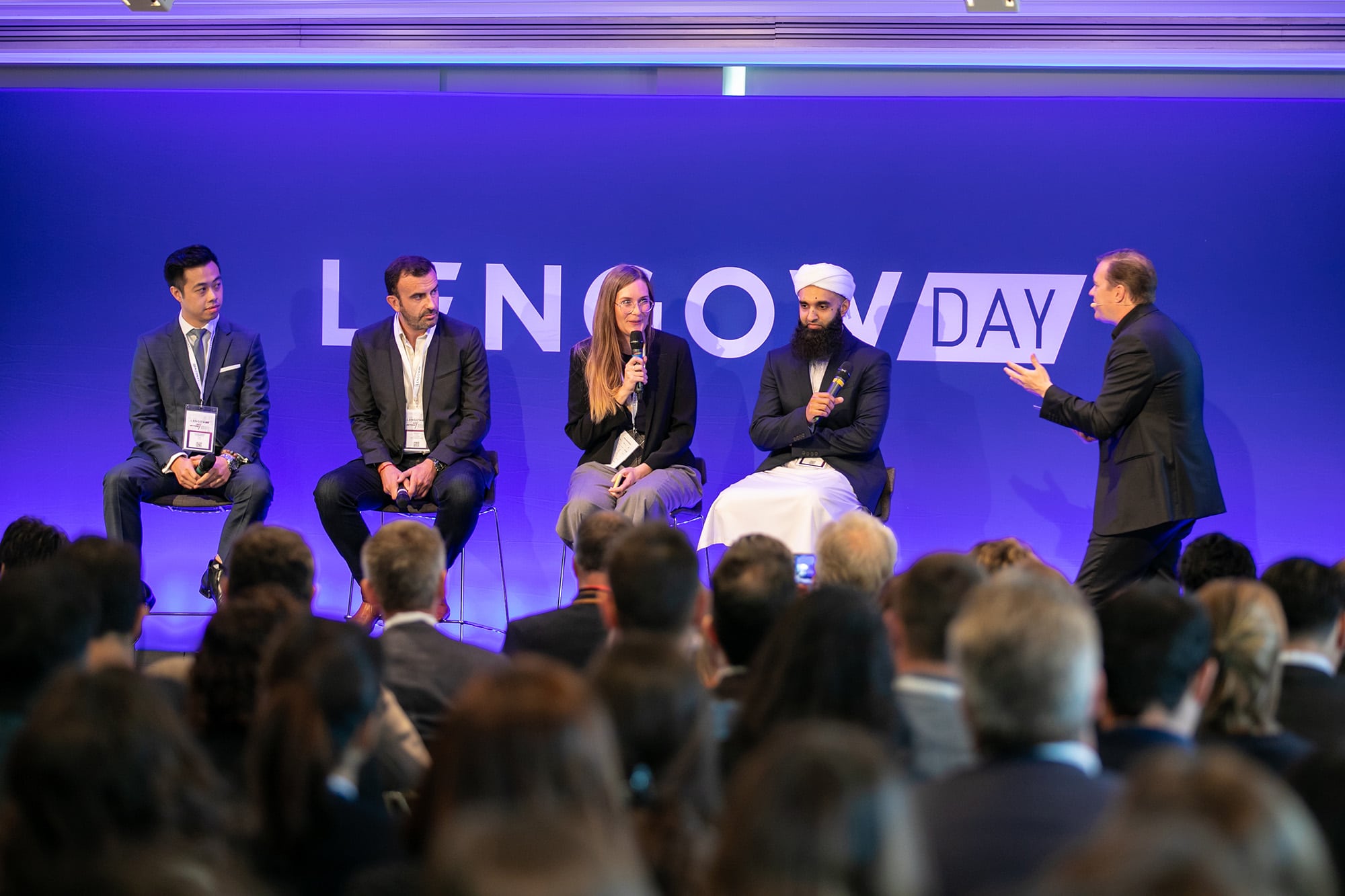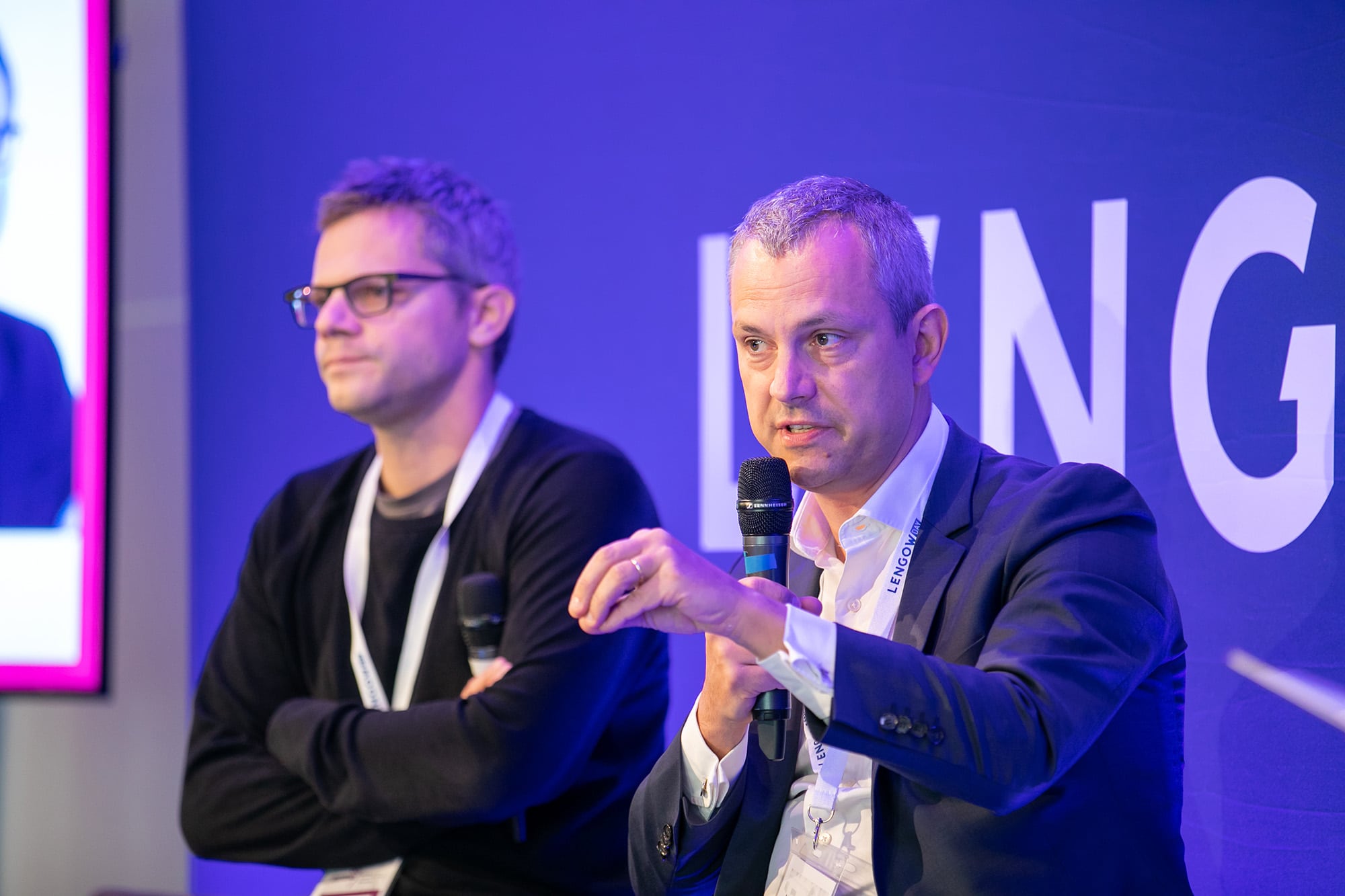Lengow Day 2018: key takeaways from our 6th year (Part 1)
18/10/18
4'
27th September saw our 6th annual Lengow Day. This year was all about highlighting a key aspect of ecommerce: the customer. Let’s take a look at the topics discussed during our first talk, “Get to Know Your Future Customers”.
Customers needs and complexities
Guido Ghedin, Global CMO of Cifnews (a Chinese media company, specialising in cross-border ecommerce) opened the discussion by reviewing a number of recent trends. The objective was to try and understand who today’s and tomorrow’s consumers are, and how to respond best to their changing expectations.
The first topic discussed was the customer journey, which is now faster than ever. Consumers don’t want to lose any time making their purchases. They want to check out a product or a service online, and get it straight away. Singles’ Day is a good example, which takes place on 11th November every year in China. Launched by Alibaba, this event developed over a few years to include a fashion show called “See now buy now”. At this fashion show, brands can showcase their new collection live, and the clothes can be bought on the spot by Chinese customers.
The second topic was the complexity of the customer journey. Having just one online shop just isn’t enough anymore. Retailers now need to be everywhere, and need to adopt multiple strategies to boost their visibility to consumers: they need to be multi-channel, multi-lingual and available on multiple devices. Marketplaces have formed an integral part of the shopping experience in China, and it’s showing in the West, too, with over 200 marketplaces in Europe.
The third topic was conversation to conversion. Ecommerce must now work closely with content creation – brands need to shape their communication strategies with ecommerce in mind whilst building their community, to build more credibility and gain the trust of their customers.
Who are our customers?
Faced with a buying journey that just gets more and more complex, we brought together four key players from different countries and sectors to share their experiences and advice.
Alicia Brocal (Head of Digital Analytics & Data Management – Hawkers) discussed the development of buying behaviour in customers in the fashion sector, and Tayyab Akhlaq (Director – Public Desire) highlighted the importance of Instagram and mobile in the buying journey of their customers. For Akhlaq, Instragram is the perfect channel for being creative, and with the help of influencers all over the world, Public Desire now has over 1 million followers.
They both agreed that brands need to be ‘mobile first’. Desktop purchases are progressively reducing in favour of mobile, as witnessed by Hawkers, whose traffic is now 80% mobile. Public Desire also rely on mobile for gaining attention from avid social media users, who can buy their products from their online store via a “Buy Button”.
Nicolas Le Herrisier (Digital Strategy Leader Executive – Renault) also underlined the importance of using customer information and data as intelligently as possible, in order to improve their service in conjunction with their needs. “Our customers are changing much faster than us, so we need to be responsive to this and stay close to our customers to truly understand them”. Digital and e-commerce are therefore the main concerns of this car manufacturer, who now sell and lease cars directly online worldwide.
From one country to another, the needs and expectations of customers are not the same (trends, weather, price, delivery, payment, etc.). At Hawkers, as well as adapting products, they’re constantly adapting to fit with the different types of consumer they’re seeing.
This adaptation also concerns culture, as witnessed by Andy Liang (Director of Business Development – Globalegrow E-commerce). In China, for example, e-commerce is an integral part of life for Chinese shoppers. However, even though online shopping is almost a way of life for them, this doesn’t mean they’re easier to reach. Without Facebook, Instagram or even Google in China, Western brands have to adapt their products and launch on platforms like Wechat and Weibo, and marketplaces like Alibaba and JD.com.
In Europe, Tayyab Akhlaq (Public Desire) found that in Germany, consumers tend to buy the same product but in different sizes, so they can try them on and return the ones that don’t fit. The challenge they faced was to make this easier for them.
A joined up approach?
70% of attendees on the day said that they sell both online and offline. To discuss this, we had the pleasure of hosting David Schwarz (SrVP Ecommerce & New Digital Activities Consumer goods/Retail/E-commerce – Carrefour) and Aymeric Moser (Marketing Director – Spartoo).
David Schwarz (Carrefour) pointed out at the beginning of the discussion that e-commerce is not a choice, but a reality. It’s been around for a number of years now, and in a number of sectors, but ecommerce has only recently hit the food industry. This prompted the supermarket chain to accelerate their digital strategy, especially with their 2022 transformation plan, which launched last January. Carrefour’s goal is to offer a united, user-friendly and consistent customer experience between offline and online, to “create a multi-channel world that connects all our stores and warehouses to provide a truly omnichannel service”.
As well as this transformation, David Schwarz (Carrefour) discussed how they have adapted to ensure the success of this plan. They have heavily invested in partnering with technology companies that specialise in data, user experience, and the supply chain.
According to Schwarz, the key is to take it step by step, but as quickly as possible. In 6 months, Carrefour have succeeded in launching a platform in France, and by the end of the year, this will be rolled out across all countries.
Much like Carrefour, Spartoo wanted to improve their customer experience as much as possible – but by doing the opposite: migrating from online to offline. Faced with a lot of competition online, competitive prices, and a difficulty in retaining customer loyalty, Spartoo decided to branch out into physical shops four years ago. In three years, Spartoo opened fifteen “Spartoo Shops”. The biggest challenge for them was to find a way to create a satisfactory experience for the client, and to build a relationship with them to encourage customer loyalty. “The customers that come in our physical stores are mainly new clients. They are much more loyal, and shop online after coming into our stores.” To accelerate their development, the shoe brand also bought the brand André, a classic name in the shoe sector. To end the discussion, Aymeric Moser (Spartoo) shared two mistakes not to be made, from his experience in the physical world of shopping: the location and the selection of the product catalogue, which is altogether more restricted when offline.
Come back soon to read our next blog post, recapping the second theme of our event: “Think Better, Act Closer”.
Your e-commerce library
Sign up for our newsletter
By submitting this form you authorize Lengow to process your data for the purpose of sending you Lengow newsletters . You have the right to access, rectify and delete this data, to oppose its processing, to limit its use, to render it portable and to define the guidelines relating to its fate in the event of death. You can exercise these rights at any time by writing to dpo@lengow.com

Trending Posts
Marketing channels
ChatGPT Ads and advertising on GenAI Search Engines: what you need to know
Advertising on generative AI-based search engines (GenAI) marks a new era in digital marketing. After two decades dominated by traditional…
22/05/25
6'
Marketing channels
Reddit and Social Commerce: When Users Take Back Control
Before buying anything, we compare. We hesitate. And more and more often, we end up typing the product name followed…
30/06/25
8'
Marketing channels
How to Sell on TikTok in 2025: The Ultimate Guide to Success
To sell or not to sell on TikTok? That remains a question many brands ask themselves. But here’s what you…
03/02/25
7'
E-commerce Trends
E-Commerce 2025: The New Rules of Digital Retail
What’s going on in e-commerce? A lot. If 2024 was the year brands got comfortable with marketplaces, AI tools, and…
11/07/25
8'
Marketing channels
Omnichannel Strategy: The Best Examples of Successful Brands
Consumers interact with brands through multiple channels, including online, in-store, and mobile apps. More than 90% of consumers expect a…
04/04/25
5'






